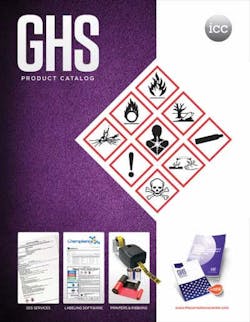Shortly after the appearance of my March 2013 feature article on machine safety standards, I received the following letter from Jim Lewis of 3M:
“We've been hearing rumors about harmonization with U.S. national standards since 2004, but 9 years later that still just seems to be gossip. Further, when dealing with our international locations in places like China, Taiwan, South Korea, Singapore, Japan, Brazil, Mexico, and Canada we get no instruction to follow ISO standards. The only place we do is Europe. Mostly what we find is propaganda from safety component manufacturers that hope to sell more product. Can you clarify?”
To help clear up this very pertinent question, I reached out to Al Manzer of Optimation Technology, a global engineering services firm headquartered in Rush, N.Y. Manzer concurred with Lewis’s experience that ISO (in particular ISO 1800), is primarily used in Europe but referenced little in other regions of the world. He added that Canada has its own version of OSHA which, for the most part, is very similar to OSHA in the United States.
With regard to Lewis’s reference to rumors about “harmonization with U.S. national standards since 2004”, Manzer mentioned a new document titled GHS (Global Harmonized System). This document refers to chemical labeling and the transition from MSDS (Material Safety Data Sheets) to SDS (Safety Data Sheets).
“GHS is attempting to get all countries to use the same format on chemical labels and SDS information,” Manzer said. “To the best of my knowledge this is what the world is currently using.”
According to the OSHA domain on the U.S Department of Labor website, GHS is “a system for standardizing and harmonizing the classification and labeling of chemicals. It is a logical and comprehensive approach to:
• Defining health, physical and environmental hazards of chemicals;
• Creating classification processes that use available data on chemicals for comparison with the defined hazard criteria; and
• Communicating hazard information, as well as protective measures, on labels and Safety Data Sheets (SDS).
“Many countries already have regulatory systems in place for these types of requirements. These systems may be similar in content and approach, but their differences are significant enough to require multiple classifications, labels and safety data sheets for the same product when marketed in different countries, or even in the same country when different regulatory authorities cover parts of the life cycle. This leads to inconsistent protection for those potentially exposed to the chemicals, as well as creating extensive regulatory burdens on companies producing chemicals.”
OSHA is quick to point out that GHS itself is not a regulation or a standard. Rather it is a guideline that “establishes agreed upon hazard classification and communication provisions with explanatory information on how to apply the system. The elements in the GHS supply a mechanism to meet the basic requirement of any hazard communication system, which is to decide if the chemical product produced and/or supplied is hazardous and to prepare a label and/or Safety Data Sheet as appropriate. Regulatory authorities in countries adopting the GHS will thus take the agreed criteria and provisions, and implement them through their own regulatory process and procedures rather than simply incorporating the text of the GHS into their national requirements.”
In the subsequent discussions I’ve had with safety experts as a result of Jim Lewis’s letter, I can see how a reader of my March article might think that the new machine safety standard referenced (ISO 13849-1) was now in effect for all OEMs. However, like GHS, ISO 13849-1 is not a globally enforced standard. ISO 13849-1 differs from GHS in that is an accepted standard (whereas GHS is a document of guidelines), but enforcement of it must still be determined by each nation’s version of OSHA.
The key point is that if you are shipping your products globally or supplying products to a company that does, you will need to be able to meet the requirements of the country to which the product is being shipped. That’s why some international standards can have a real impact on your business regardless of where your company is located and whether or not the standard is enforced in your area.
Leaders relevant to this article:


